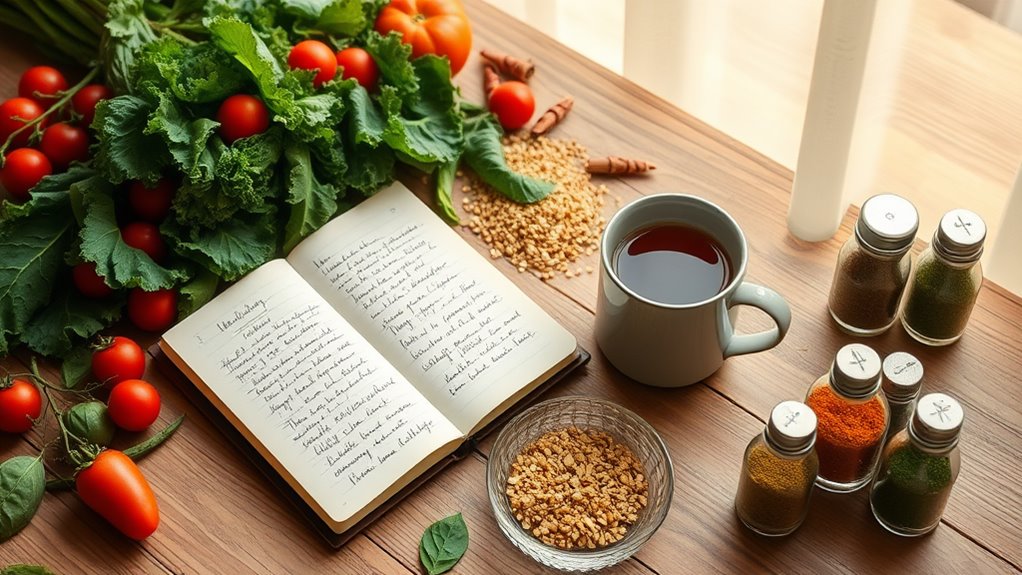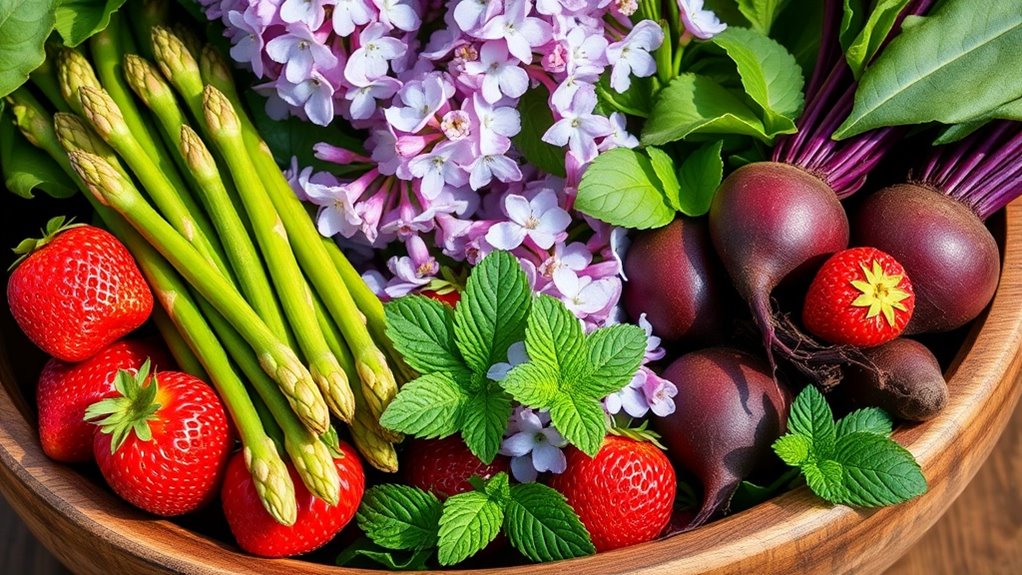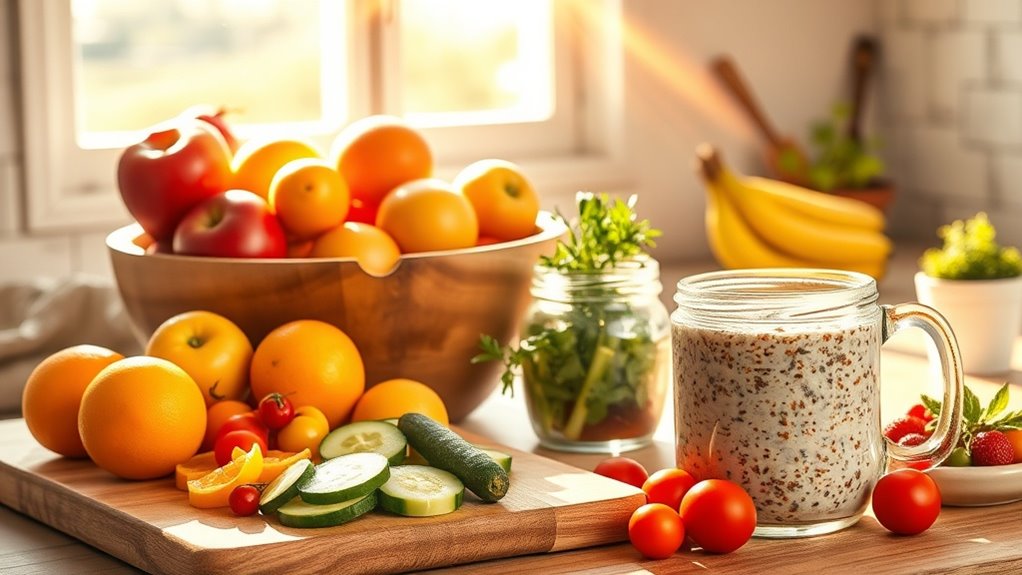Planning Meals Without Obsessing- A Realistic Guide
When it comes to meal planning, it’s crucial to find a balance that works for you. Embracing flexibility can make the process enjoyable, rather than burdensome. You don’t have to stick to rigid rules; instead, think about how to design a pantry that inspires creativity. By letting go of the stress associated with meal prep, you’ll find yourself exploring new flavors and combinations. Want to learn how to create meals that fit your lifestyle without the pressure?
Embracing Flexibility in Meal Planning
While you may have a vision for structured meals, embracing flexibility in meal planning can lead to greater satisfaction and sustainability.
By incorporating simple meal planning techniques, you can adapt to your schedule and cravings, making healthy eating more achievable.
Allow yourself to mix ingredients or change meals last minute, enhancing your culinary experience while sticking to your goals.
Embrace spontaneity—it often leads to delightful discoveries! Additionally, following essential food rules can help you make healthier choices without feeling restricted.
Creating a Balanced Pantry
Many people underestimate the importance of a balanced pantry in their meal planning efforts. A well-stocked pantry helps you whip up nutritious meals without stressing.
Focus on filling your shelves with:
- Whole grains like quinoa and brown rice
- Canned beans for protein
- Fresh or frozen vegetables
- Healthy fats such as olive oil and nut butters
These staples empower you to create diverse, delicious dishes. Incorporating smart grocery shopping can further streamline your meal prep process.
Quick and Easy Meal Prep Techniques
When it comes to meal prep, batch cooking can save you time and stress throughout the week.
By focusing on simple ingredients, you can create versatile dishes that keep your meals interesting and nutritious.
Let’s explore how these quick techniques can simplify your cooking routine without overwhelming you. One effective way to enhance your meals is to incorporate simple hacks that make healthy eating choices easier.
Batch Cooking Benefits
Batch cooking not only saves you time during the week, but it also makes nutritious eating more accessible.
By preparing meals in advance, you can enjoy the following benefits:
- Reduced weeknight cooking stress
- Healthier meal choices when hunger strikes
- More time for family or hobbies
- Less food waste with planned portions
Embracing batch cooking can transform your eating habits and simplify your life.
Simple Ingredients Approach
Preparing meals with simple ingredients can streamline your cooking process and make meal prep less intimidating.
Focus on a handful of versatile staples—like grains, legumes, and seasonal veggies—that you can mix and match.
Utilize one-pot recipes for efficiency, and consider batch prepping these ingredients at the start of the week.
This approach not only saves time but also reduces stress during busy weeknights.
Incorporating Seasonal Ingredients
Incorporating seasonal ingredients not only boosts the flavor of your meals but also supports local agriculture and reduces your carbon footprint.
When you select fresh, in-season produce, you’re choosing items that are at their peak nutritional value.
Plus, with a variety of simple seasonal recipes available, making the most of what’s in season can be both fun and rewarding.
Benefits of Seasonal Eating
When you choose to eat seasonally, you not only support local agriculture but also enhance your meals with fresher, more flavorful ingredients.
Seasonal eating can:
- Save you money by reducing transportation and storage costs
- Boost your nutrition through peak freshness
- Inspire creative recipes that change with the seasons
- Connect you with your community and its bounty
Enjoy the delicious benefits of nature’s calendar!
Selecting Fresh Ingredients
Selecting fresh ingredients is key to creating vibrant meals that reflect the season.
When you choose seasonal produce, you’re not just enhancing flavor; you’re also boosting nutritional value.
Visit local farmers’ markets or grocery stores that highlight seasonal items.
Don’t hesitate to ask vendors about recent harvests—they can guide you toward the freshest choices available, making your meal planning both enjoyable and practical.
Simple Seasonal Recipes
Once you’ve chosen fresh, seasonal ingredients, putting them to good use in your meals becomes exciting and straightforward.
Here are some simple recipes to inspire your cooking:
- Roasted root vegetables with herbs
- Seasonal fruit salad drizzled with honey
- Fresh green salad topped with nuts and cheese
- Grilled fish with lemon and a side of asparagus
These meals highlight flavors and nutrients, making healthy eating enjoyable!
Flavorful Meal Combinations to Try
Creating flavorful meal combinations can elevate your dining experience without the stress of overthinking every ingredient.
Try pairing grilled chicken with mango salsa for a revitalizing twist, or combine quinoa with roasted vegetables and a drizzle of balsamic glaze for depth.
Don’t forget classic complements like garlic and herbs; they enhance any dish. Including foods rich in omega-3 fatty acids, such as salmon or walnuts, can also support brain health, making these combinations even more beneficial.
Experiment and enjoy the creative process—it’s all about discovery!
Setting Realistic Goals for Meal Planning
Finding meal combinations you love can make planning easier, but it’s important to set realistic goals for your meal prep.
Consider these tips:
- Start with three meals a week.
- Choose recipes that use similar ingredients.
- Allow for flexibility—swap meals as needed.
- Set aside one day for prep to avoid feeling overwhelmed.
These strategies help you enjoy meal planning without stress. Additionally, focusing on healthier eating habits can make meal planning more enjoyable and sustainable in the long run.





